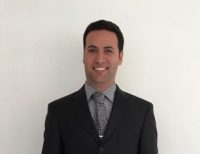Experimental Investigations of Beam-Driven Plasma Wakefield Accelerators

Speaker: Navid Vafaei-Najafabadi
Affiliation: Ph.D. Candidate - UCLA
Abstract:
A plasma wakefield accelerator (PWFA) uses a plasma wave (a wake) to accelerate electrons at a gradient that is three orders of magnitude higher than that of a conventional accelerator. The focusing properties of the plasma wave in addition to its high accelerating force makes it an ideal structure for accelerating electrons. Using a method known as ionization injection, it is possible to insert background plasma electrons into this highly-relativistic, transient structure and generate a high-energy electron beam.
This thesis explores the effects of ionization injection in a PWFA through experiments and in simulations. In the first experiment, a rubidium-based plasma was used, where the ionization injection of electrons occurred over the entire length of the plasma. In that case, the distributed injection of background plasma electrons over an extended length led to dampening of the accelerating force to the detriment of the PWFA. In the second experiment, a lithium-based plasma was used where the ionization injection region was confined to a much smaller range at the front section of the plasma, reserving the bulk of the plasma for acceleration only. This injector-accelerator configuration resulted in an accelerated electron beam with properties that are very favorable for the future applications of a PWFA to a free electron laser (FEL) or a collider. These experiments were part of the FACET Campaign at the SLAC National Accelerator Laboratory and used FACET’s 3 nC, 20.35 GeV electron beam generated in a 2 km linear accelerator to ionize the plasma source and drive a wake.
3D Particle-in-cell simulations showed that further control of the injection region can result in better optimization of the PWFA, leading to bright, high-current, low-energy-spread electron beams.
Biography:
Navid Vafaei-Najafabadi received his BSc in Engineering Physics and MSc in Electrical Engineering from the University of Alberta, Canada in 2007 and 2010, respectively. He joined Professor Joshi’s group and his research on plasma-based accelerators at UCLA and in collaboration with the SLAC National Accelerator Laboratory resulted in co-authoring over twenty journal articles and conference proceeding, including two articles in Nature. He advanced to Ph.D. candidacy in the Electrical Engineering Department in 2012.
For more information, contact Prof. Chan Joshi (joshi@ee.ucla.edu)
Date/Time:
Date(s) - Aug 29, 2016
1:00 pm - 3:00 pm
Location:
E-IV Tesla Room #53-125
420 Westwood Plaza - 5th Flr., Los Angeles CA 90095
